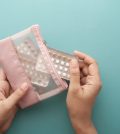Don't Miss
- E. Coli Outbreak Linked to McDonald’s Quarter Pounders Widens to 75 Cases in 13 States; 22 Hospitalized
- Weight-Loss Surgeries Decline 25% as More Americans Turn to GLP-1 Meds
- Burger King, Other Fast Food Chains Also Pulling Onions Tied to E. Coli Outbreak
- CDC Confirms Second Human Bird Flu Case in Missouri With No Known Exposure to Farm Animals
- CDC Says Some People May Need Extra Dose of COVID Vaccine
- Wildfires Are Gaining Speed in Western U.S., Upping Threat to People
- People’s Brains Now Process Texts Almost as Quickly as Pictures
- There’s Still Confusion on How to Spot, Treat Severe Allergic Reactions
- What Works Best to Ease MS-Linked Fatigue? New Study Finds Out
- Are ‘Elimination Diets’ Much Help Against Child Eczema?
Health Tip: Is Baby in Pain?
By LadyLively on January 15, 2014


Babies may not be able to speak, but that doesn’t mean they can’t communicate. Babies often give signals that they’re in pain, and parents should pay attention.
The University of Michigan Health System mentions these warning signs that baby may be in pain:
- Crying for an unusually long time, or crying that sounds higher-pitched or more severe than usual. Not crying doesn’t always mean that baby isn’t in pain, however, as some premature babies may be unable to cry.
- Pay attention to the faces your baby makes: wrinkling the brow, grimacing, opening the mouth, squeezing eyes closed or deep lines around the nose can all indicate pain.
- Babies in pain may become stiff or pull their arms and legs close to them. Babies may also wiggle and squirm when in pain, while others may become very quiet.
- Babies in pain may be uninterested in eating, unable to sleep, unusually fussy or may not be easily calmed with the usual comforting techniques.
Source: HealthDay
Copyright © 2024 HealthDay. All rights reserved.








-200x224.jpg)

